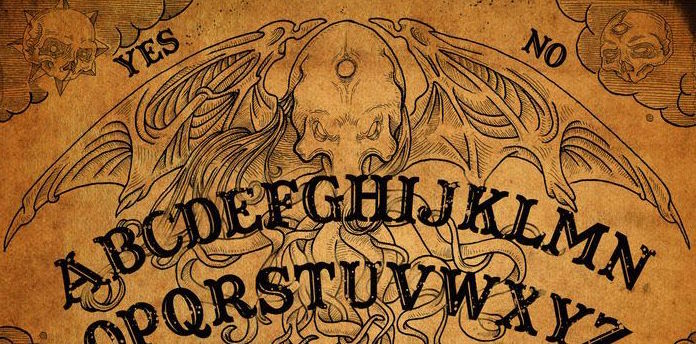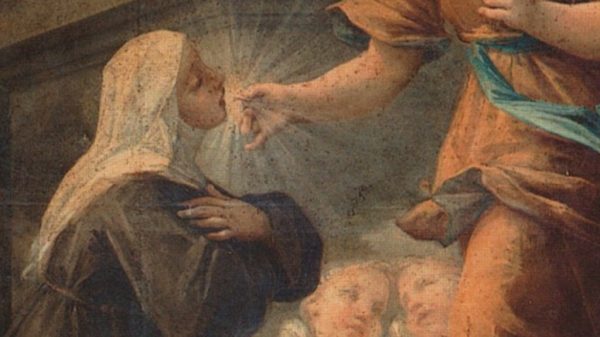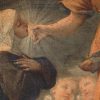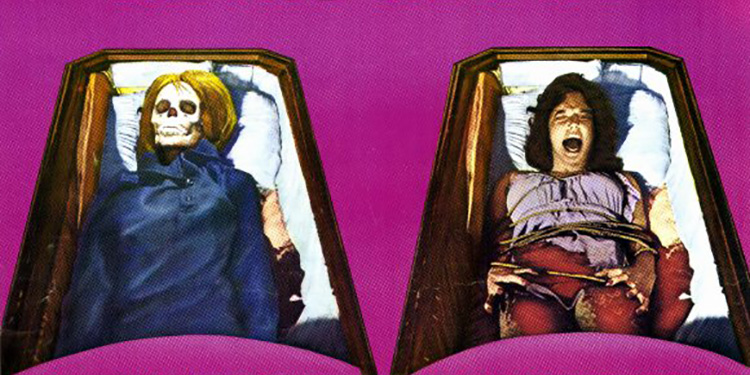Originally posted on Creepy Culture Society
Since the dawn of human-kind, we have been captivated by death and what lies beyond our living experience. Attempts to contact the other side to obtain hidden knowledge have been commonplace in cultures around the world for thousands of years and, no doubt, beyond our recorded history.
Ancient Spirits
Shamanism has been documented in societies all over the globe and is believed to have been in practice for tens of thousands of years. The Shaman practitioner would enter a trance state through rituals involving music, drumming, the use of spiritual artifacts, and the consumption of hallucinogens. The trance would allow the shaman to enter into the supernatural realm to communicate with spirits of nature or of deceased persons, in order to obtain knowledge or provide for the spiritual healing of people in the physical world. “Shamanistic” practices can still be seen in cultures around the world.
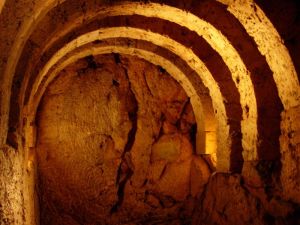
Necromancy, from Ancient Greek meaning “divination of the dead”, is the magical practice of summoning spirits for the purpose of divination. The Necromanteion, “Oracle of the Dead”, was a temple in Greece, dedicated to Hades and said to be built on a location where spirits of the dead were thought to make their entrance into the underworld. Homer and Herodotus both mention necromancy and the Necromanteion. In Homer’s Odessey, the hero Odysseus is instructed to perform a ritual involving animal sacrifice and prayers to the gods and the dead, during which he would travel to the underworld to gain foresight of his voyage home.
Visitors to the Necromanteion would have undergone several days of rituals, sacrifices and special diets, perhaps including hallucinogens, before being led into an dark underground chamber where they would expect to be visited by spirits and visions in the dim fire light.
Romans are believed to have had a similar “Oracle of the Dead” at Baiae on the Bay of Naples, that featured an underground sulfurous stream which is thought to have been representative of the mythical River Styx. The practice of necromancy has been documented in ancient Persia, Babylonia, Egypt, and well on into Medieval Europe. The use of ritual, incantations, animal sacrifices and often including body parts of the deceased, have been a common theme in necromancy across cultures. In all instances, it was believed that spirits of the deceased held special knowledge that could be communicated to the living through specific rituals.
Abrahamic Necromancy
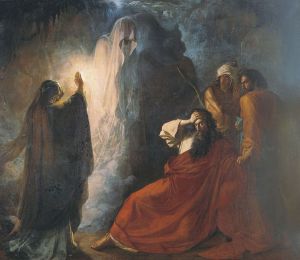
The Witch of Endor was a medium or necromancer from the 11th century BCE that is mentioned in the First Book of Samuel in the Hebrew Bible, or Christian Old Testament. The story goes that King Saul is concerned about the outcome of his impending battle against the Philistines and is desperate for answers. Necromancy and magic had been outlawed in Israel, so King Saul goes in disguise to visit a woman in Endor who claims she can evoke the spirit of the prophet Samuel. The spirit of Samuel is angered at being aroused and predicts Saul’s defeat. Saul’s army falls to the Philistines the next day and Saul commits suicide.
Early Christian leaders, of course, tended to discount the story of the Witch of Endor – claiming that she was a ventriloquist or actually communicating with demons or the the devil in disguise. Curiously, going on into the Middle Ages, it became the dominion of the Catholic Church and its estranged clerics to perpetuate the development of necromancy.
Despite condemning necromancy and all “dark arts”, the Church was ironically responsible for the continuation of its practice, as religious training was essential to one’s literacy and ability to access the arcane text required to practice necromancy. Naturally, these traditions took on much darker connotations as the Church promoted its beliefs that only God could have jurisdiction over the dead and that those practicing magic were, most certainly, being deceived by demons.
19th Century Spiritualism
In large part due to the writings of Emanuel Swedenborg (1688-1772), Spiritualism was booming between the 1840s and1920s. By 1897, Spiritualism boasted as many as 8 million followers in the US and Europe, mostly among the middle and upper class.
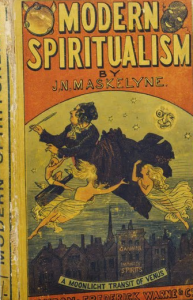
“Modern Spiritualism: A Short Account of Its Rise and Progress, with Some Exposures of So-called Spirit Media” by John Nevil Maskelyne. Frederick Warne & Co. (1876)
People were growing weary of their conventional religions and became fascinated by the supernatural and occult practices, particularly a belief in ghosts and the ability to communicate with them. Spiritualists believed that one could become a spiritual medium through study and practice and many of the most well known mediums were women, as it was believed they were better ghostly communicators. Interestingly, Spiritualism was so popular during this time that one could command authority on almost any social issue just by claiming to have had direct spiritual contact and, therefore, many Spiritualist women were allowed to speak publicly.
The late 1800s was time when we see a rise in public interest of many occultic practices. Séances were the preferred method to receive messages from the other side, where one to several people would gather around a table, led by a Spiritual medium, and attempt to evoke a spirit into communicating. Perhaps most notably, Mary Todd Lincoln, wife of President Abraham Lincoln, was a Spiritualist and hosted séances at the White House after the demise of their son, Willie. Séances were affairs of great theatrics – in darkened rooms, with candles, moving tables, and ghostly rapping noises.
Clairvoyance, crystal balls, and mesmerism all became quite fashionable. Automatic writing became a popular form of mediumship in the 1870s. Spiritualist were claimed to have been using “talking boards” in the 1880s, however, the first commercial Ouija board was not introduced until 1890 and was largely regarded as a parlor game.
Charlatans and Frauds
Unfortunately, the increasing popularity of Spiritualism and mediums gave rise fraudulent entertainers. Spiritualism became quite the profitable enterprise and mediums needed to escalate their showmanship and provide the most compelling evidence of spiritual encounters to compete for audiences. Fraudulent mediums became such a concern that they prompted a number of independent investigations into Spiritualism. In 1884, the University of Pennsylvania appointed 10 faculty members to the Seybert Commission and charged them to investigate several prominent mediums. The Commission’s report, published in 1887, concluded that Spiritualist mediums were largely fraudulent.
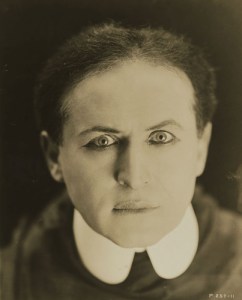
Harry Houdini c. 1920
In the 1920s, magician and escapist Harry Houdini visited mediums in an attempt to contact his deceased mother. Finding that they were often frauds, Houdini dedicated a large part of his career to debunking psychics and mediums, condemning them as “vultures who prey on the bereaved.” Houdini went so far as to attend séances in disguise, only to reveal the charlatan’s parlor tricks at the end of the event.
More recently, famed television medium such as John Edward, Theresa Caputo, and Chip Coffey are the target of skeptics who seek to expose them as frauds. Popular claims are that these self-proclaimed psychics are merely practicing a technique known as “cold reading”, where they ask leading questions and make overly vague statements in an attempt to imply that they know more about the audience than they actually do.
Modern Technology
Twentieth century technology brought to light a new form of contact with the deceased – that of Instrumental Transcommunication (ITC). This method focused on the use of electronic equipment to capture evidence of spirits in the form of photographs or recordings of disembodied voices inaudible to the human ear, known as Electronic Voice Phenomenon (EVP). These technological means are largely in practice today by paranormal investigators, Spiritualists, and parapsychologists.
In the 1940s, an American photographer by the name of Attila von Szalay began experimenting with capturing disembodied voices on a 78 rpm record. His attempts were unsuccessful until 1956, after teaming with psychologist Raymond Bayless and switching to a custom-made apparatus using a reel-to-reel tape recorder. The pair published their findings in the Journal of the American Society for Psychical Research. Bayless went on to publish several other papers and co-authored the book, Phone Calls from the Dead.
In the late 1950s, Swedish film producer Friedrich Jurgenson unexpectedly captured several voices while out recording bird songs. He believed them to be the voices of his deceased father and wife and went on to capture more voice recordings. After several years of EVP research, Jurgenson published his findings in his book, Roesterna Fraen Rymden (Voices from the Universe).
Latvian parapsychologist Konstantin Raudive was so taken by Jurgenon’s work that the two arranged a meeting in 1965 and made several recordings together. Raudive went on to make some 100,000 recordings over the remainder of his life and published his findings in his book, Breakthrough: An Amazing Experiment in Electronic Communication with the Dead.
1980 saw the invention called the Spiricom, by George Meek and Bill O’Neil. The Spiricom was a large computer with 13 tone generators that spanned the frequency of an adult male voice. O’Neil claimed that his device allowed for two-way conversations with the deceased.
In 2002, Frank Sumption created a device that would generate white noise and sweep through AM frequencies, so that spirits could communicate through the radio voices as it cycled through the band. Known as “Frank’s Box” or “Ghost Box”, the device would potentially allow for the user to communicate with spirits in real time, rather than having to stop and listen to a recording. There are now several devices that emulate this design.
Today? There’s an app for that.
Sources:
Shamanism
Necromancy from Antiquity to Medieval and Modern Times
Tapping the Bones: A Brief History of Necromancy From Ancient Greece to Boneghazi
Necromanteion of Ephyra
The Unsolved Mystery of the Tunnels at Baiae
Witch of Endor
The Rise of 19th-Century American Spiritualism, 1854-1873
Preliminary Report of the Commission Appointed by the University of Pennsylvania to Investigate Modern Spiritualism
Houdini and the Supernatural
The Anomalist – EVP
Society for Psychical Research
WorldITC – Spiricom

